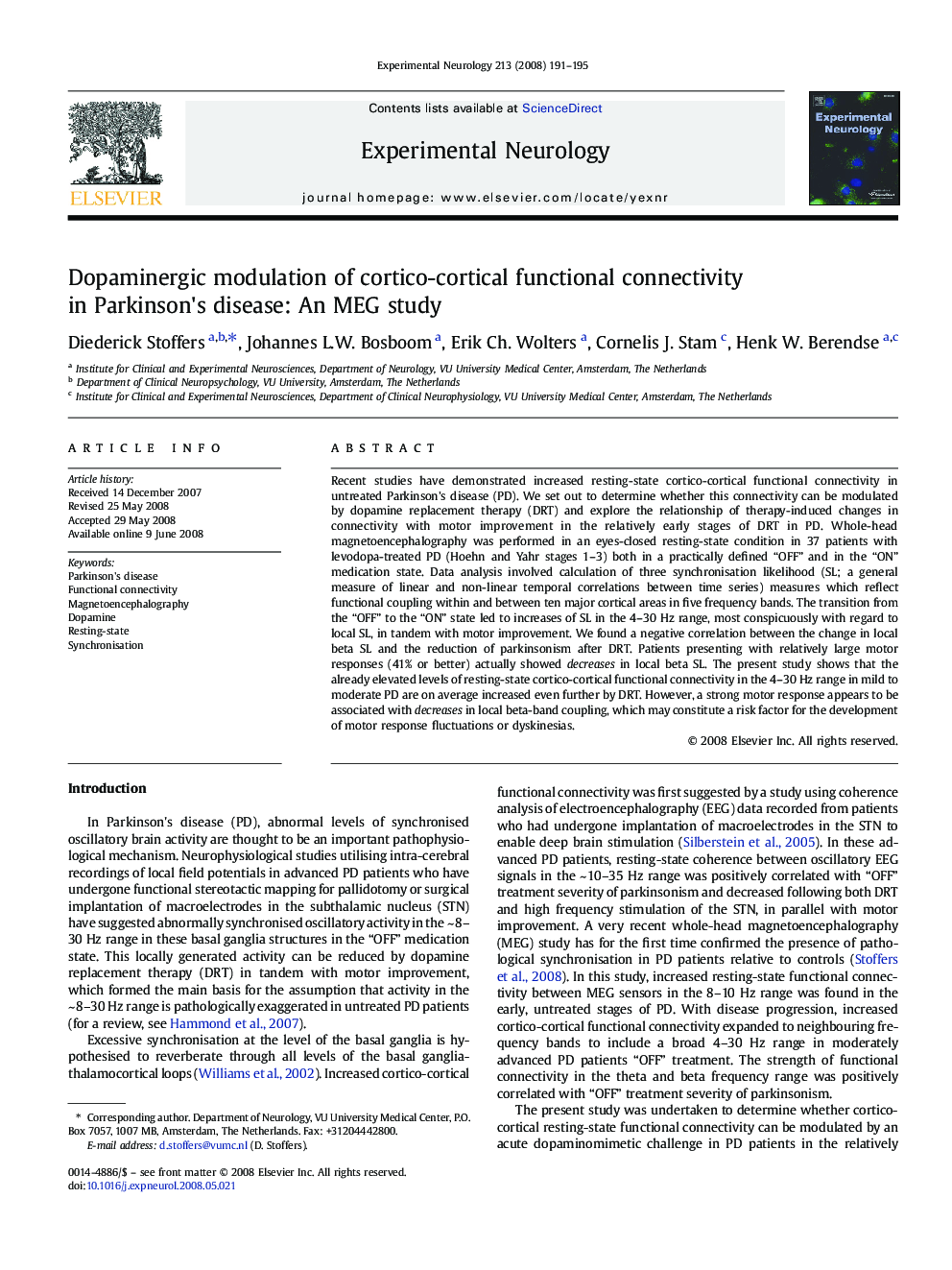| Article ID | Journal | Published Year | Pages | File Type |
|---|---|---|---|---|
| 3056430 | Experimental Neurology | 2008 | 5 Pages |
Recent studies have demonstrated increased resting-state cortico-cortical functional connectivity in untreated Parkinson's disease (PD). We set out to determine whether this connectivity can be modulated by dopamine replacement therapy (DRT) and explore the relationship of therapy-induced changes in connectivity with motor improvement in the relatively early stages of DRT in PD. Whole-head magnetoencephalography was performed in an eyes-closed resting-state condition in 37 patients with levodopa-treated PD (Hoehn and Yahr stages 1–3) both in a practically defined “OFF” and in the “ON” medication state. Data analysis involved calculation of three synchronisation likelihood (SL; a general measure of linear and non-linear temporal correlations between time series) measures which reflect functional coupling within and between ten major cortical areas in five frequency bands. The transition from the “OFF” to the “ON” state led to increases of SL in the 4–30 Hz range, most conspicuously with regard to local SL, in tandem with motor improvement. We found a negative correlation between the change in local beta SL and the reduction of parkinsonism after DRT. Patients presenting with relatively large motor responses (41% or better) actually showed decreases in local beta SL. The present study shows that the already elevated levels of resting-state cortico-cortical functional connectivity in the 4–30 Hz range in mild to moderate PD are on average increased even further by DRT. However, a strong motor response appears to be associated with decreases in local beta-band coupling, which may constitute a risk factor for the development of motor response fluctuations or dyskinesias.
